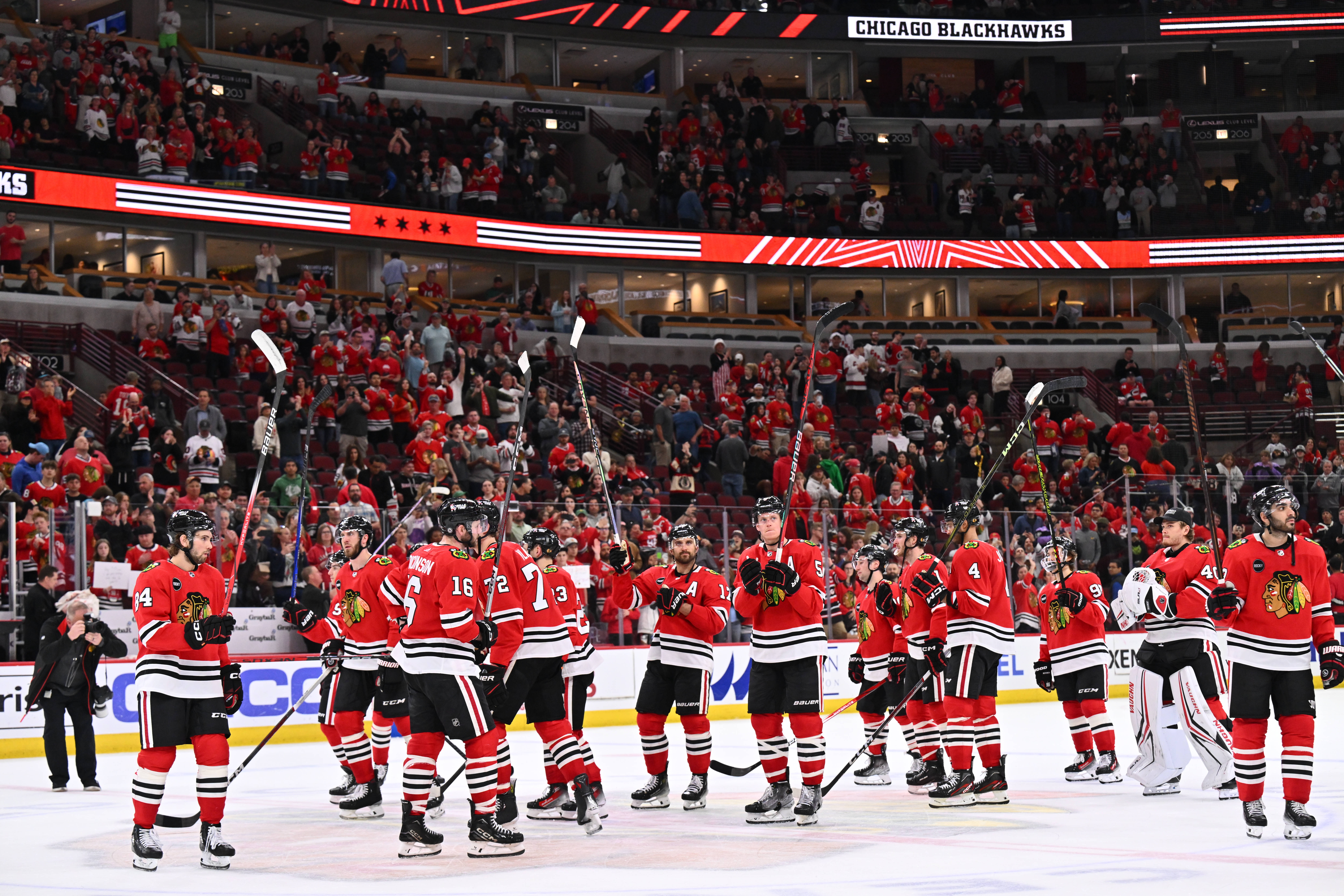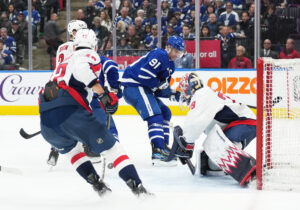Is home-ice advantage truly as powerful as it’s made out to be in a season opener, the playoffs, or even Game Seven of the Stanley Cup? While statistics point to a higher winning percentage, is it more about luck, coaching, and puck possession? Or do the roaring fans ignite the performance boost? For the Chicago Blackhawks, playing on familiar ice could be the key to stringing together back-to-back victories.
Home Ice Advantage: The United Center
Home-ice advantage played a limited role for the Blackhawks during the 2023-24 season. The team managed only two win streaks, each lasting two games. One came in early December with back-to-back home victories against the Anaheim Ducks and St. Louis Blues. According to Luke Richardson, leveraging wins at home depends on solid goaltending. During the win against St. Louis, he told the media:
“Most athletes get a taste of victory and they want more. I think that’s what we want out of this group.”
Alex Vlasic added that the Blackhawks need to make their home arena more challenging, ensuring opponents will battle for every win. When discussing the team’s gameplay intentions with the media, it’s important to focus on translating those strategies onto the ice. While the specifics of advancing the team’s play are clear, the challenge remains: how can the team enhance their performance and secure more victories at home?
Performance Overview Metrics
The 2023-24 season presented significant challenges for the Blackhawks, as reflected in their 19.5% point total. While the team did not make the playoffs and finished at the bottom of their division, they secured a high draft pick, which offers a silver lining. With a lower point and win percentage, the Blackhawks faced limited chances to elevate their gameplay and accumulate more points.
The Blackhawks won more games at home than on the road, with a 16-21-4 record. In 41 games, the team scored 49 goals, averaging just 1.2 goals per game. This scoring output is relatively low compared to the league average. If the team is not effectively converting scoring opportunities, they struggle to execute plays offensively, resulting in fewer wins at home and overall. A rough start at home can lead to inconsistency and allow mistakes to persist. The ongoing issues on the ice create a cycle where poor performance increases existing struggles, affecting both their home and away games.
2023-24 Goals Per Month
In January, the team faced a tough stretch, spending most of their time on the road. They generated the fewest goal-scoring chances, averaging just 1.21 per game. Petr Mrázek handled most goaltending duties during this period. Whether at home or away, it’s clear that when big players are sidelined by injury, the team’s performance takes a hit. Filling those gaps can be difficult. If the team wants to make their home ice more of a battleground, they must spend less time scrambling to fill those positions. Instead, they should strengthen their depth to cover those roles effectively.
Head coach Luke Richardson acknowledged at the end of the season that some players “were being placed in the wrong roles.” He openly shared with the media that this misalignment wasn’t an excuse, but the team “didn’t have enough to maintain the way they started.”
However, the home-ice advantage has boosted fan attendance since last year. According to the Chicago Sun-Times, despite the team being at the bottom of the division, they climbed to fourth place in attendance rankings by February. This rise was driven by their performance across 24 games.
Shot Attempts: What’s Working and What Needs Improvement
Coach Richardson has always emphasized that, realistic or not, he approaches each game with the mindset of winning. So, how are they going to get there? Creating scoring opportunities for the Blackhawks does not appear to be the issue. Despite a relatively high number of scoring chances (734), the team loses momentum to turn these chances into actual goals. Their Corsi For Percentage is notably low at 43.63%, compared to the league average of 50%. This indicates the team was often outshot and lost possession of the puck compared to their opponents. Players might be subconsciously easing their way into gameplay, but Richardson insists that for next year, he wants “them going at it 100 miles per hour” the moment they step onto the ice.
Examining their Fenwick For (FF) and Fenwick Against (FA) metrics show that, while their unblocked shot attempts are moderate, they fall short of ideal levels. To better utilize their home-ice advantage, the team needs focusing on generating high-quality scoring. The Blackhawks must improve their FF percentage by balancing the number of attempts they create with those they allow.
Winning Culture
Nick Foligno summed it up well, saying,
“I don’t want to be one of those teams that’s rebuilding for 5, 6 years…that’s not how you grow a winning culture. You can’t be in that cycle for so long…I know there’s a progression, but I don’t think you can be caught in that mindset.”
While past statistics and home records provide context, the upcoming season represents a fresh start. With a passionate fan base fueling their efforts, the team can leverage the home-ice advantage. The focus will be on enhancing puck possession and converting scoring chances into goals. By capitalizing on the energy and refining their strategies, the team aims to transform their home arena into a battleground of success.
Main Photo Credit: Jamie Sabau-Imagn Images






